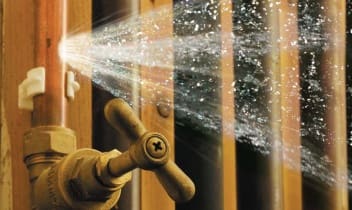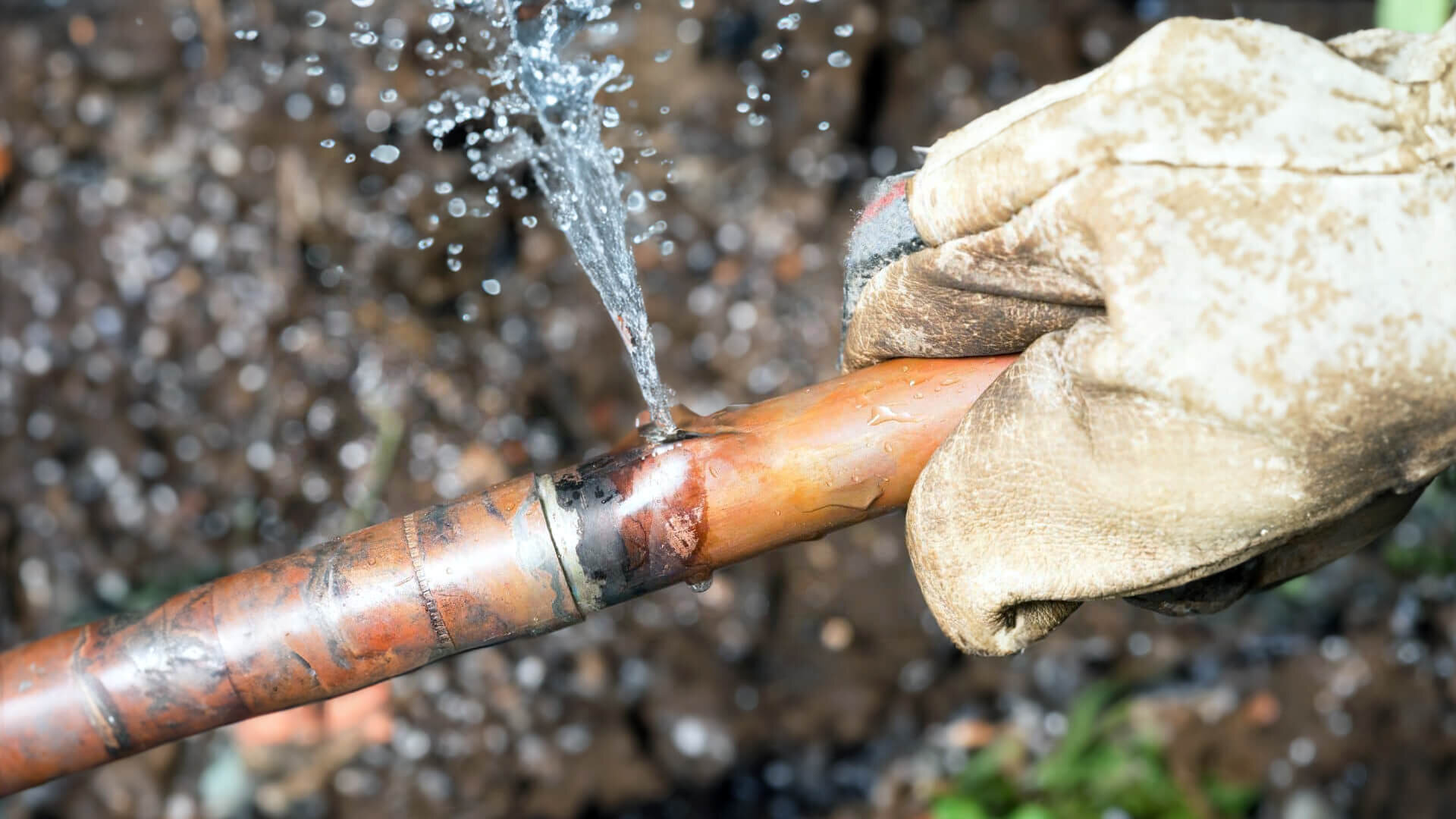How to Fix a Burst Pipe Yourself: A Step-by-Step Guide for Homeowners
How to Fix a Burst Pipe Yourself: A Step-by-Step Guide for Homeowners
Blog Article
Avoiding Burst Pipes: Crucial Tips to Safeguard Your Plumbing
Protecting against ruptured pipelines is an important concern for property owners, especially throughout chillier months when the risk of cold is heightened. Executing strategic actions such as proper insulation, regular inspections, and maintaining consistent indoor temperatures can substantially decrease the possibility of pipe failure.
Understand Pipeline Vulnerabilities
Comprehending pipe vulnerabilities is essential for reliable plumbing maintenance and protecting against expensive damage. Several variables add to the sensitivity of pipes to ruptureds, including material structure, age, and environmental conditions. Older pipelines, specifically those made from galvanized steel or polybutylene, usually degrade over time, resulting in boosted danger of leakages and ruptures.
Temperature level fluctuations can additionally considerably effect pipeline integrity. In chillier environments, water trapped in pipelines can ice up, broadening and exerting pressure on the pipe wall surfaces, which might eventually result in a burst. High water pressure can stress pipelines, particularly at joints and bends, increasing the likelihood of failing.

Insulate Water Lines Appropriately
Correct insulation of pipes is critical for avoiding cold and subsequent bursts during winter (burst pipe). Shielding your plumbing system efficiently safeguards against temperature level drops that can cause pricey damages. Begin by determining at risk locations where pipelines are revealed to outside temperatures, such as basements, attics, and exterior wall surfaces
Usage foam pipe insulation sleeves or cover insulation tape around these areas to offer a safety obstacle. Ensure that all sections of the pipes, especially those with minimal warmth exposure, get appropriate insulation. Pay unique attention to joints and installations, as these are a lot more prone to freezing.
When protecting, it's vital to choose products that satisfy regional building ordinance and are appropriate for the specific atmosphere. As an example, fiberglass insulation is often recommended for its thermal resistance properties - burst pipe. Additionally, take into consideration utilizing heat cables or tape in extreme problems, which can be plugged in to supply additional warm
On a regular basis evaluate shielded pipes for any kind of signs of wear or damages, as endangered insulation can lessen its efficiency. By taking these proactive steps, you significantly decrease the threat of pipeline ruptureds, ensuring a trusted pipes system throughout the cold weather.
Maintain Constant Temperature
A secure interior temperature is necessary for avoiding burst pipelines during the icy months. When temperature levels decrease, water within pipes can ice up, broadening and creating stress that may inevitably create the pipes to ruptured. To mitigate this risk, house owners need to keep a constant temperature level throughout their living space, ideally no less than 55 ° F(13 ° C)Using a programmable thermostat can assist take care of interior temperature levels effectively, making sure that spaces with pipes remain cozy also when your house is vacant. Pay special attention to areas that are much more at risk to you can find out more cold, such as basements, attics, and garages. Maintaining cupboard doors open under sinks can also permit warmer air from the home to circulate around plumbing.
Furthermore, it is prudent to allow taps to trickle a little during severe chilly spells. This small flow of water can prevent freezing by reducing pressure within the pipes. Furthermore, during especially serious weather condition occasions, think about momentarily putting on hold any kind of nighttime problems on your thermostat to keep a steady warm environment. By carrying out these methods, property owners can considerably reduce the danger of pipe bursts and protect their pipes systems versus the extreme winter months components.
Routinely Inspect Plumbing
Normal examinations of pipes systems are crucial for stopping ruptured pipes and preserving general home honesty. Regular checks permit property owners to identify prospective issues before they intensify right into expensive repairs or major water damages. During these examinations, it is vital to check out noticeable pipes for indicators of corrosion, leaks, or wear. Pay special attention to areas susceptible to cold, such as basements, attic rooms, and exterior walls.
Furthermore, inspecting joints and connections is vital, as these points are usually susceptible to leaks. House owners need to also assess water stress levels, as excessive stress can stress the plumbing system and enhance the threat of pipeline ruptureds.
Think about scheduling expert pipes examinations at the very least once a year, specifically prior to winter season, to guarantee your system is prepared for chillier temperatures. By being proactive in your strategy, you can guard your home versus the pricey and disruptive effects of ruptured pipes.
Know Emergency Situation Treatments
Comprehending emergency treatments is essential for every single house owner, especially after performing regular plumbing assessments. Being prepared for a pipes emergency situation can significantly minimize damage and save prices. Locate your primary water shut-off valve; it is normally found near the water meter or where the primary line enters your pop over to this site home. Acquaint yourself with its procedure, as turning off the water supply promptly can avoid considerable flooding.
Next, keep necessary devices helpful. A plumbing emergency situation kit ought to include a wrench, plunger, and towels, as well as a flashlight and a container for little leaks. In addition, consider having the contact details for a relied on plumbing technician conveniently available, ought to the circumstance intensify past your control.
If you detect a leak or burst pipeline, right away switch off the water and alert your plumbing professional. Furthermore, document the damage with pictures for insurance coverage objectives. burst pipe. Know the signs of potential plumbing issues, such as find out here unusual water stress fluctuations or damp places on walls
Eventually, proactive expertise and quick action are crucial in handling pipes emergencies, guaranteeing your home continues to be secured and reducing potential damages.

Final Thought
Finally, stopping burst pipelines demands a complex technique that includes understanding pipe susceptabilities, proper insulation, keeping regular interior temperatures, routine evaluations, and knowledge of emergency situation treatments. By applying these crucial methods, the danger of plumbing failings can be significantly lowered, consequently ensuring the durability and effectiveness of the pipes system. Positive measures not only secure against possible damage however also add to general water preservation and the protection of residential property.
In colder environments, water trapped in pipes can freeze, putting in and increasing pressure on the pipeline wall surfaces, which may inevitably lead to a burst. When temperature levels drop, water within pipes can ice up, developing and expanding stress that might ultimately trigger the pipelines to burst. By carrying out these strategies, property owners can significantly decrease the threat of pipeline bursts and guard their plumbing systems against the harsh winter season components.

Report this page